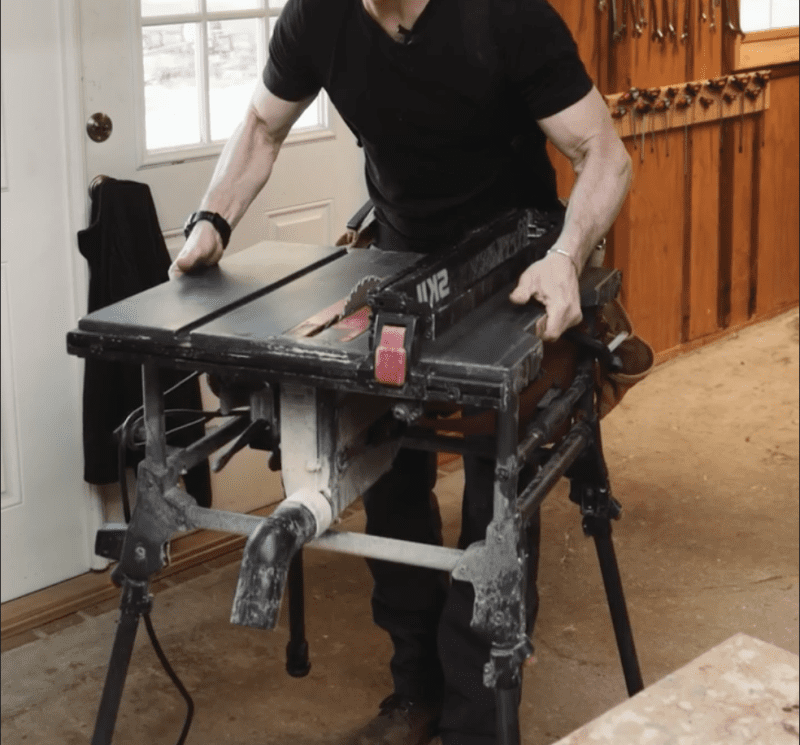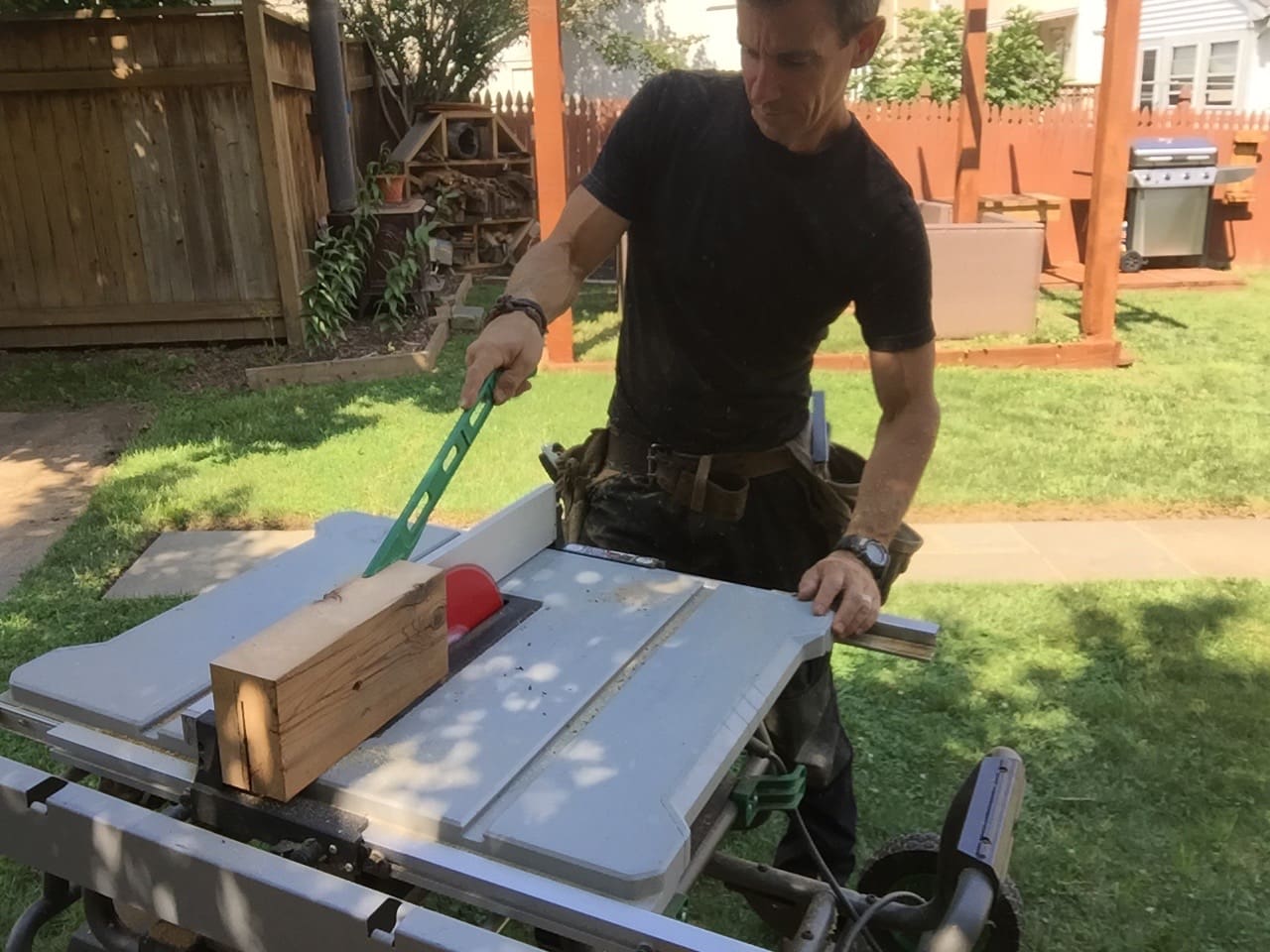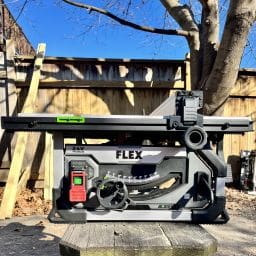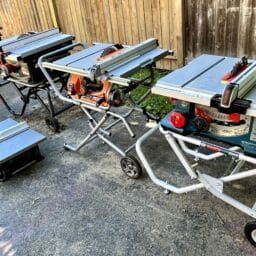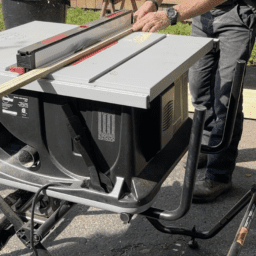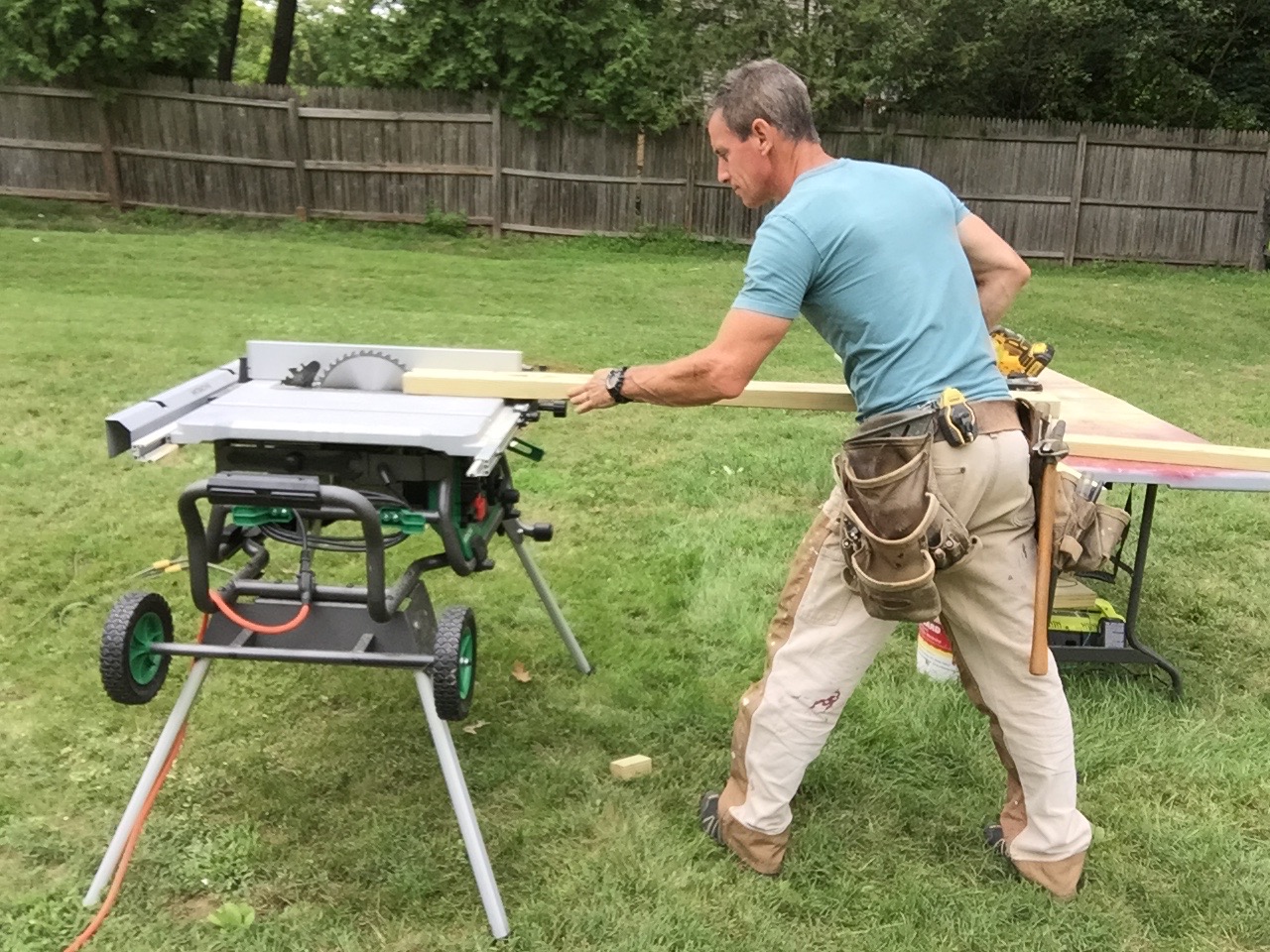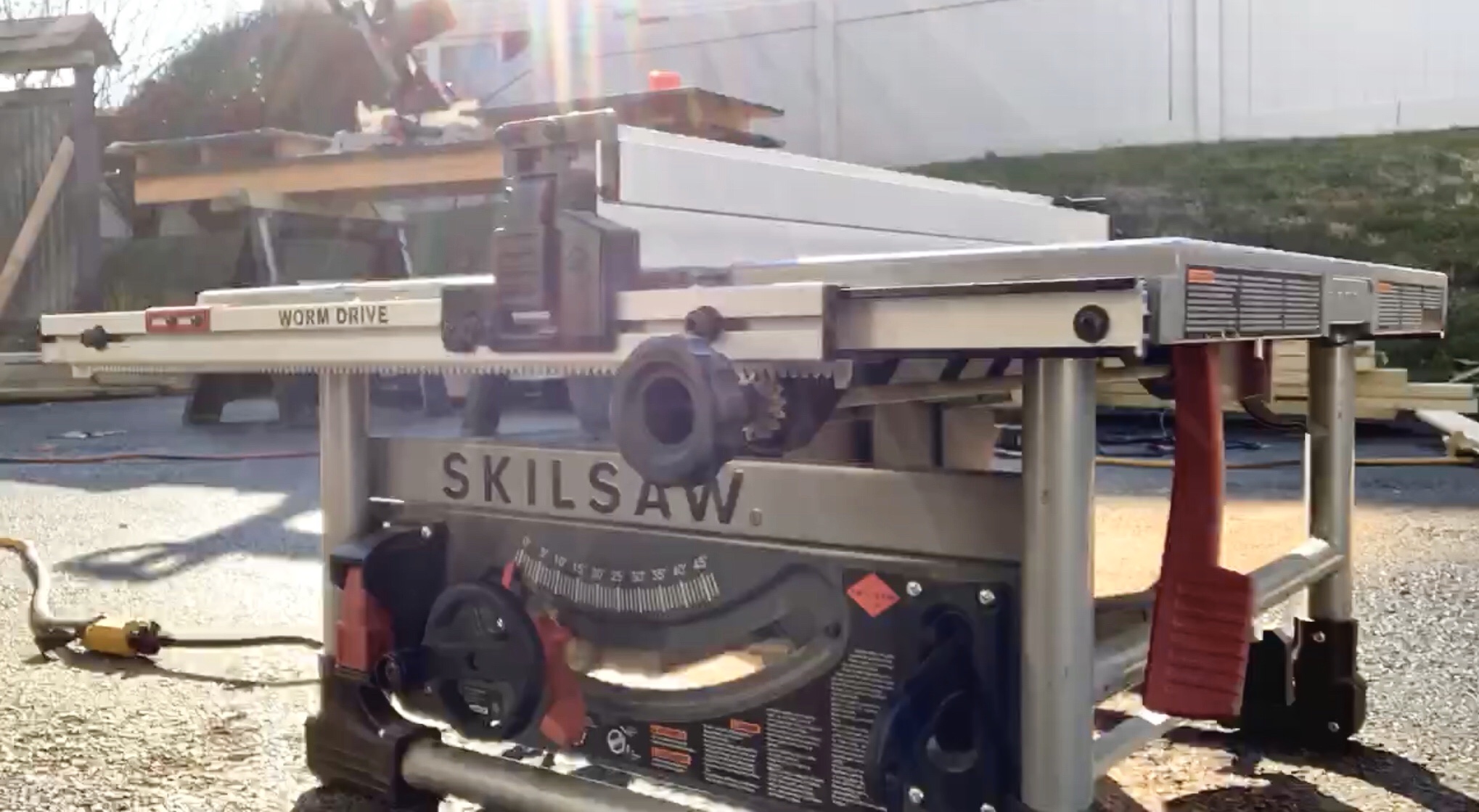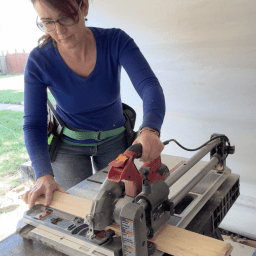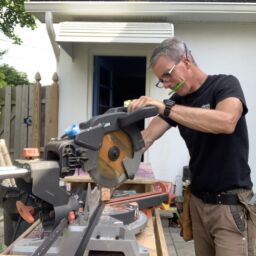If you are looking for the best table saw for a mobile jobsite or DIYer, look no further. Here’s my hands-on tool review of the Skil 10-Inch Table Saw With Folding Stand. I have used dozens of portable table saws over the course of the past decade, and have been using the Skil table saw on a variety of home improvement jobsites for more than a year.
Top-Line Skil Table Saw Review
- Does the most the best
- Light
- Powerful
- Light, stable built-in stand
- Excellent fence
- Finicky switch
- Cord wrap
- Side carry handle
Real Deal, Hands-On Skil Table Saw Review
Combining the mile wide feature set professional and DIY table saw users need is a tool designer’s Mt. Everest to create the best table saw. Some users skew to safety, refined details and giant price tags like SawStop. Others want a big and mobile, but also meant to stay in one place for long periods of time like Bosch, Ridgid, Metabo HPT. Some want light and mobile like the DeWalt with accessory stand or the 8¼-inch Skilsaw (corded) or DeWalt and Milwaukee cordless. And others, like me, want most of the above distilled into a single unit with no battery to deal with.
How does the Skil table saw compare?
The Skil 10-inch table saw is the nexus of this Venn diagram in my book and for my needs for the best table saw. I’ve reviewed most of the saws in the category. Some are so refined and well made they’re also super expensive.
Others are portable in name only. Even though they have stands and wheels, no lone person is carrying them up a flight of stairs. Just getting them in the truck–nevermind storing them sensibly–is pert near a two-person job. Others are tinny and too DIY for comfortable use, so they are not right for busy DIYers and professionals like me. The Skil? Nailed it as the best table saw.
History of the best table saw
Over the last 25 years, table saws have seen more of an evolution than many other tools. Back then, a portable table saw was basically a circular saw mounted under a table that may or may not have had some kind of stand.
Ryobi, of all brands, was the first to hack the Matrix with the Ryobi BT3000. Yeah, it was “portable”, but jeeze! It had a fantastic fence, extending table (I think), and a built-in router table. The legs bolted together like swole IKEA furniture, and so old me remembers young me loving that unit.
Conversely, I also had a Skil table saw that was light and portable-ish with a similar bolt-together leg system. Light, yes. Portable, kinda. Easy to store on a truck? No.
Then there was the Bosch table saw that was the best table saw for a while.
Then along came Bosch with a ground breaker. Bosch’s to-this-day phenomenal table saw is phenomenal. It has a great on-board folding stand. I think I was actually part of this: I was a tool magazine editor at the time and a very smart guy came to me with a terrific folding table saw stand that he welded together in his garage. So I mentioned it to the Bosch rep thinking I might be doing the inventor a favor. A year later the Bosch Gravity Rise was on store shelves.
The saw itself has an amazing cut capacity and is rock solid stable. For a while I considered it to be the best table saw. The fence is a genuine thing of beauty. But good luck getting that into the truck or up a flight of stairs by yourself.
After Bosch broke the ice, then all the majors followed suit; table saws and their included stands got bigger.
But, most of us don’t need a 24-inch cut capacity for sheet goods, even though the diminutive Skil has a 24½-inch cut capacity if you need it. That’s workshop saw territory, for the most part.

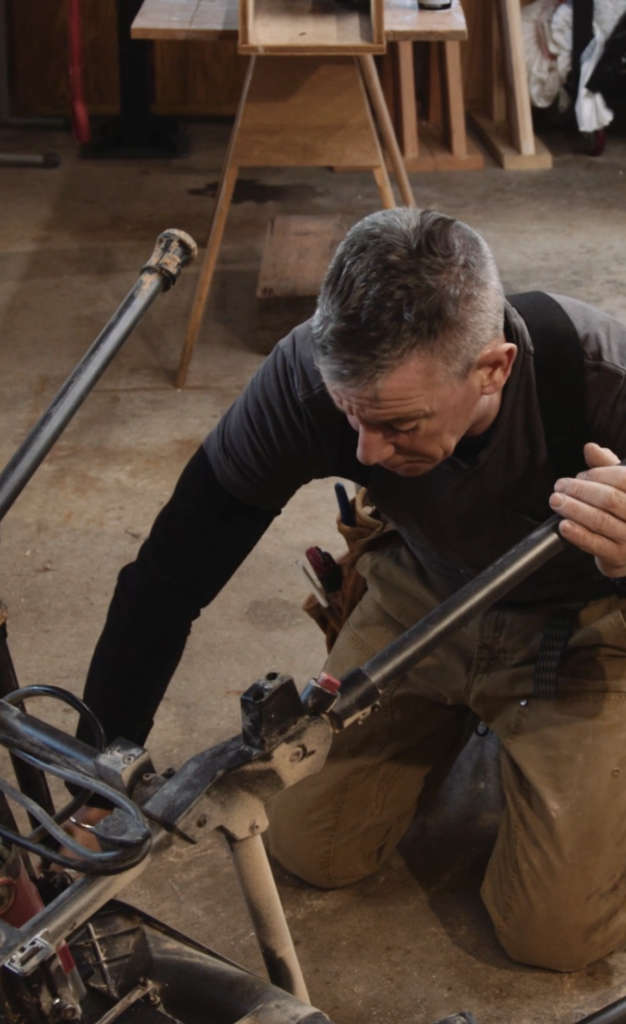
What makes this Skil table saw the best table saw?
For my purposes–and what portable table saws have primarily been designed for–is ripping boards. More, ripping boards where the boards are and the work is located; NOT where the saw is.
So that means, the saw needs to move. Tires on an anvil with a blade means that I can wheel it along the ground, and therefore not lift it–like in the kitchen I’m currently re-framing–up a hill, tight entry stairs and through the door.
Skil’s light table saw means I can carry it like a tray from its side-mount under-table grips for most of the journey, then use the side-hande to carry it like a suitcase through door openings. Smart.
What about the table saw stand?
Skil’s answer to the overwrought folding/rolling stand is brilliant and built-in. The super stable, super-easy to deploy, light but strong folding leg system akin to the OmniTable Plus (see review here) is full crusher. Deployed, it’s easily as stable as saws twice its size, hassle and cost. Folded down, it makes the saw into a cube–WIN!–and there is nothing better or easier to store in a truck, shop or site than a cube.
But the included blade is a pass on this best table saw.
Not even the best table saw is perfect, so this Skil table saw review comes with one hiccup that’s easy to fix. The included “fine finish” blade isn’t so. But at $299 for such an excellent saw, buying a nice Diablo or Spyder blade is a no-brainer.
How is the fence?
The DeWalt-inspired–and patent expired, I bet–rack and pinion fence was dead parallel to the blade out of the box and remains so after thousands of miles in the back of my tool truck and miles of framing and finish material I’ve run through it.
What about the table saw’s cord wrap?
I love the cord wrap. Sure the cord is stiff and short (an odd and frequent determinant if a tool is bubkus or not) but I run a cord to the tool and it’s fine.
How is the on/off switch?
The switch isn’t my favorite. It’s an On/Off covered by a paddle. Stick through the opening in the paddle to hit On. Hit the paddle to switch Off. Problem is, the hole is small and I often do both at the same time. Big deal? Not a detail that sways me on this tool, considering that I can carry it up a flight of stairs.
Bottom Line
The Skil 10-inch portable table saw with stand does the most the best, for what I need to do.

